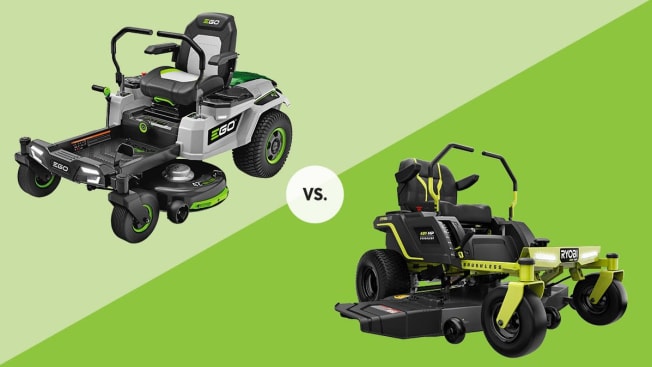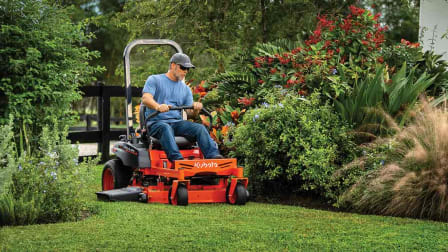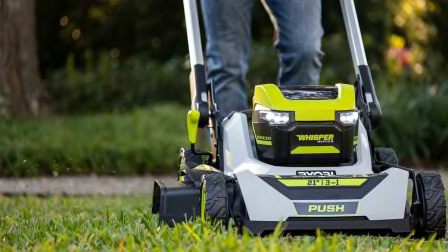Battery-Powered Zero-Turn Lawn Mower Face-Off: Ego vs Ryobi
Find out which of these electric mowers has the edge in CR’s tests
When you shop through retailer links on our site, we may earn affiliate commissions. 100% of the fees we collect are used to support our nonprofit mission. Learn more.

Zero-turn technology and battery power are two major trends that have taken hold among lawn mower buyers in recent years. The battery-powered, zero-turn riding mower, a relatively new category, marries those innovations.
If you have a large-ish, ½-to-1-acre yard—especially one that’s irregularly shaped—a battery-powered, zero-turn riding mower could be ideal. They’re easy to maneuver, energy efficient, and easier to maintain than gas mowers. But which one is best?
The Ego ZT4204L and the Ryobi RY48140, like the other battery zero-turn riders in our tests, make tight turns by independently powering each drive wheel. They’re far easier to maneuver than traditional riding mowers. If you have to negotiate tight corners, tree trunks, curved borders, and other irregular lawn features, having that flexibility and functionality can be a plus.
And in general, battery power makes mowers quieter and more energy efficient than a comparable gas riding mower. A battery model also requires less maintenance; for instance, at the end of the season you don’t have to winterize it by emptying or adding stabilizer to the gas tank. Newer battery zero-turn models can cover up to an acre on one charge, so you can set aside worries that they’ll run out of power before you run out of lawn.
Read on for our cut-by-cut take on the Ego and Ryobi.
Cutting Performance
In key aspects of grass cutting, the Ego ZT4204L and the Ryobi RY48140 are tied. Both give very even cuts. Both get Excellent marks in mulching performance: how well they cut up clippings and spread them completely on your lawn’s surface.































